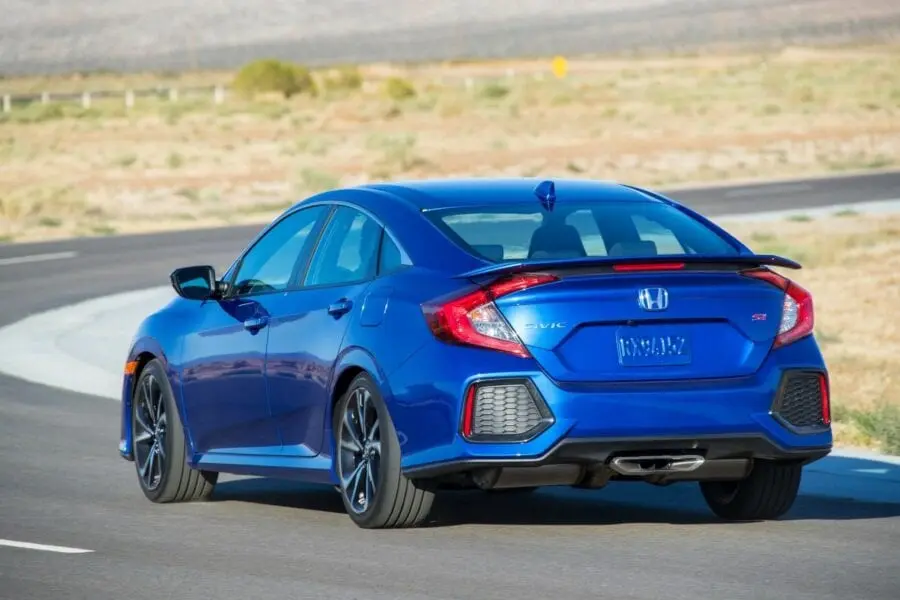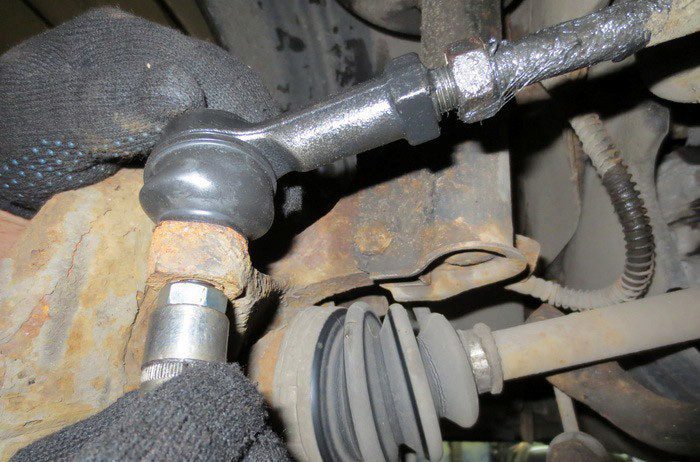
Steering head: principle of operation, design and diagnostics
Content
Any car must have the ability to turn, otherwise such vehicles would move on rails, like a train or tram. Steering may vary from model to model, but key elements are required. Among them is the tie rod end.
What is a tie rod end?
As the name suggests, this part is mounted on the steering rack rod. Basically, it is a thick stud with a thread on one side and a pivot element on the other. An external thread is made on the stud, so that the part can be installed on the steering rack rod.
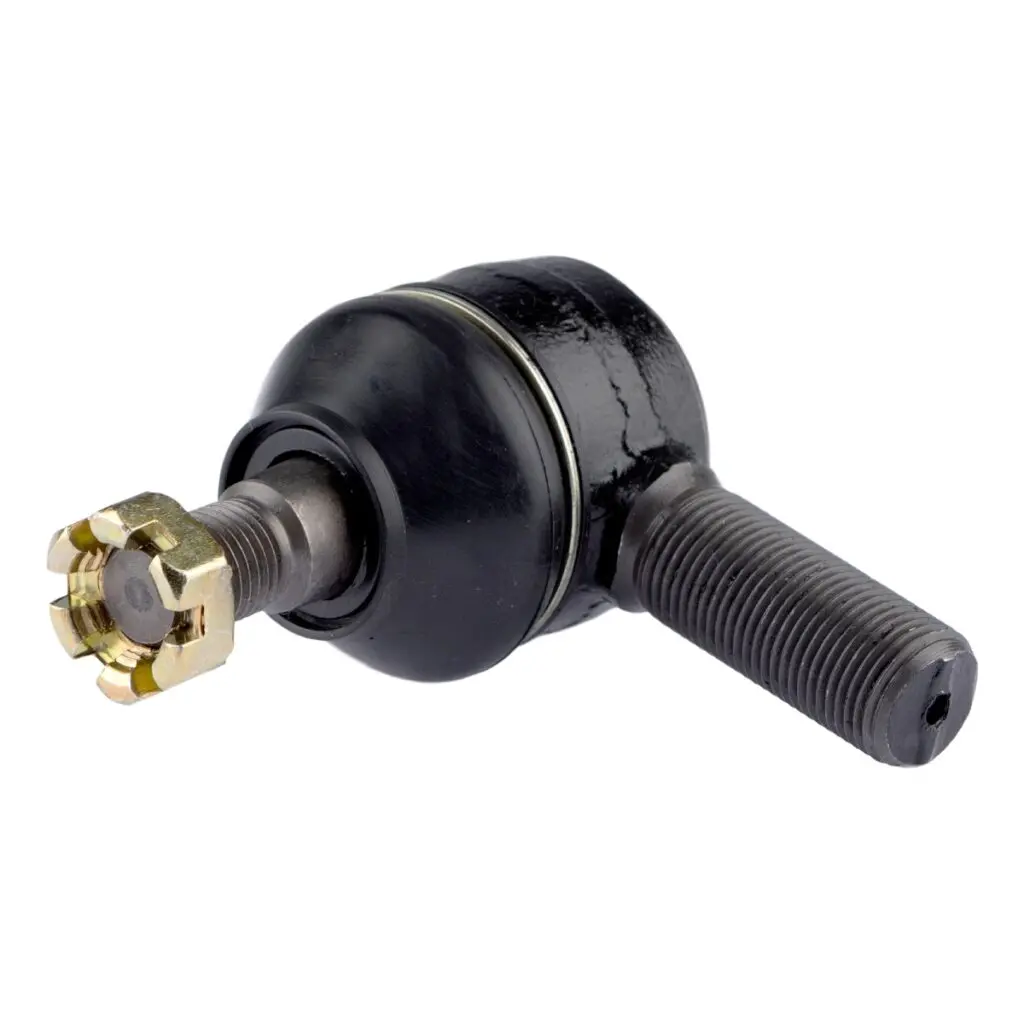
The ball part of the part is fixed on the steering knuckle. About what it is and what function it performs, read in aboutтuseful article.
What is a tie rod end for?
The steering mechanism in different car models can be very different. For example, a hydraulic booster is installed in one car, and an electric analog in the other. And the budget car is equipped with a conventional mechanical rail. However, the handpieces are of the same design. The only difference is only in size and slight changes in shape.
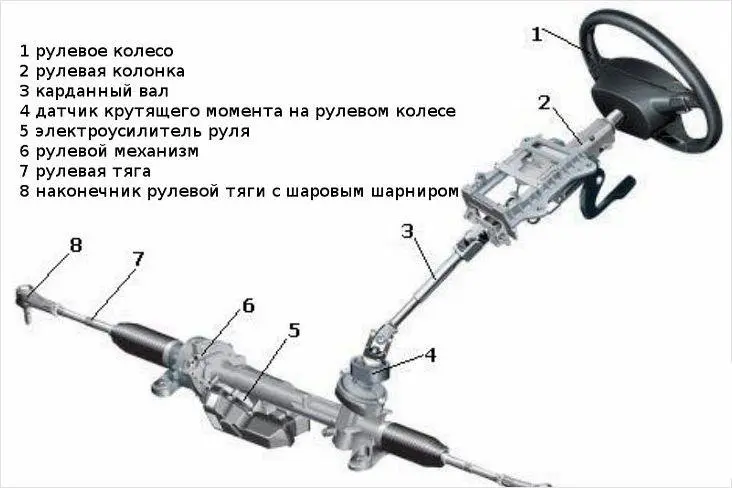
The property of this part is to transfer the force from the thrust to the fist. The peculiarity of the tip is that it allows the steering wheel to turn even when it is moved in three planes. When the car is driving over bumps, the front wheel rises and falls, but at the same time it should not lose the ability to respond to the steering wheel.
Also, cars may have a different number of ball-type tips.
Steering tip device
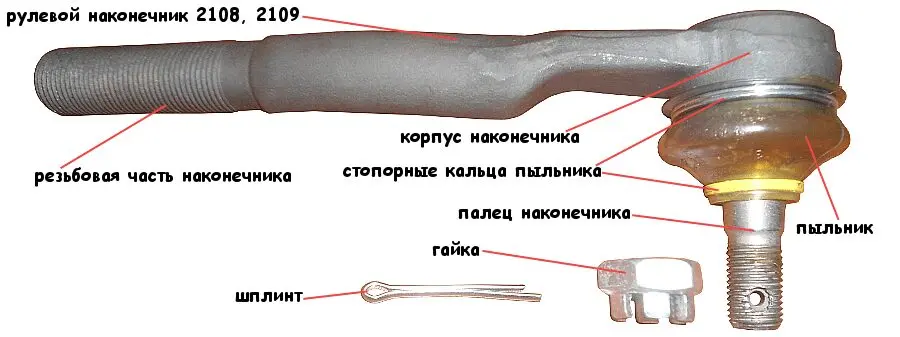
There are eight parts in the steering head assembly:
- Centered body with axle;
- Extended body part with external thread;
- Teflon gasket installed in the body cup. It prevents wear on the pin or the inside of the case;
- Spring element giving elasticity to the ball mechanism;
- Bottom plug, against which the spring rests inside;
- Ball finger. In the upper part, an external thread is made on it and a hole for installing a cotter pin that fixes the nut. The lower part is made in a spherical shape like a head that fits into a joint in the skeleton of the human body;
- Plastic or silicone cap to prevent moisture and dirt from entering the body;
- Lock washer that holds the cap in place.
The principle of operation of the steering rod
The steering tip works on the same principle as the joints in the human body. As much as possible, its structure is similar to the hip or shoulder joints. The ball-head pin is firmly seated in the housing bowl.
While driving, the wheels move in a vertical and horizontal plane, but at the same time they also turn. If the tip finger is rigidly fixed on the wheel knuckle, the part will break at the slightest bump.

Due to the mobility of the pin on which the swivel element is fixed, the steering rack retains its position (it can be rigidly fixed), but this does not interfere with the slight movement of the wheel.
Depending on which direction he wants to turn the car, he turns the steering wheel. The rods, to which the tips are attached, move relative to each other, and together with them, the forces are transmitted to the fastening of the wheels.
What causes tie rod end malfunctions?
Although the ball mechanism of the steering tip is movable, it is not uncommon for it to fail. There are several reasons for this:
- Negligence of the driver - untimely diagnostics. It is very easy to perform when changing the rubber seasonally. The wheels are removed anyway. This is a good opportunity to conduct a visual inspection of the part;
- Malfunctions in the steering mechanism can increase the stress on these elements;
- Due to the poor quality of the road, the mechanical load on the hinge sleeve increases;
- Natural wear and tear of the plastic cap or Teflon liner;
- The spring broke under the finger.
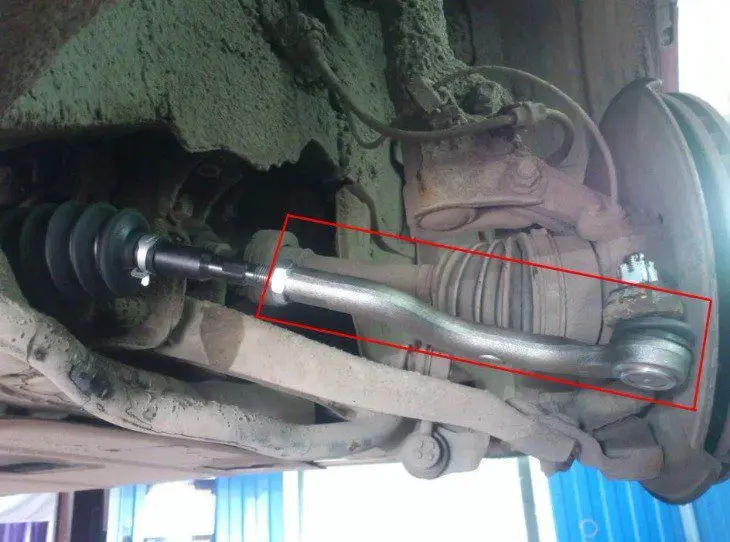
A tip malfunction is diagnosed quite easily. Often, part malfunctions are accompanied by knocks when the car drives over bumps or turns. Usually these sounds come from one side, because it is extremely rare for parts to fail at the same time.
If the handling has deteriorated, this is another reason to look at the steering tips. In this case, the steering play may increase (details about this parameter were considered a bit earlier). Also, the breakdown is manifested in knocks that give off to the steering wheel during maneuvers and are accompanied by distinct clicks.
Ignoring such signs is an inevitable accident in the future, because critical play of the steering wheel or tangible changes when turning it destabilizes the vehicle at high speed.
What is needed to replace the steering tip
First, replacing the steering tip requires experience with this procedure. If it's not there, don't experiment.

Secondly, even if you manage to do the work yourself, you still have to go to the service center. The reason for this is the knocked down camber-convergence after replacing the part. If the road to the service is long and has a large number of holes, then it is better to replace and adjust in boxes located not very far from each other.
Thirdly, in especially neglected cases, a special puller will be required. It will help you to remove the part without the need to knock with a hammer on the working parts.
Replacing the steering tip
The replacement sequence is as follows:
- In any case, the machine must be hung out to relieve the wheel;
- The lock nut located near the rod is loosened;
- The bobbin is removed, which prevents arbitrary loosening of the nut, and the nut itself on the finger is unscrewed;
- The tip is dismantled with a puller. The tool pushes the part out of the seat. Some perform this procedure with two hammers. One gently knocks on the ear of the lever, and the other - as close as possible to the tip mount;

- Before unscrewing the part from the rod, a mark should be made on the parts so that the new part is screwed in to the appropriate limit. This will allow you to get to the place where the camber is adjusted without incident. Some, instead of a mark, consider how many revolutions the old part is installed. A new one is screwed into the corresponding number of turns;
- If there is a need to replace the rods (often the tips fail due to deformed rods), then the anthers are removed and these elements are also replaced.
The completion of the procedure should be a mandatory camber adjustment. Otherwise, you will have to spend money on new tires and experience discomfort while driving.
Here's one way to quickly diagnose tip failure and replace it:
Questions and answers:
Can I ride if the steering tip knocks? If there is a knock while driving, then you need to go to the service station for repair. You must not drive a car with a faulty steering system (at any time, the tip may break and cause an accident).
How to determine if the steering tips are faulty? The car wags to the sides (when the steering wheel is released), the wheels turn inadequately, excessive beating in the steering wheel on bumps, knocking and crunching from the front of the car.
Why change the tie rod end? It is an element of the vehicle's steering. Its malfunction can cause an accident. At the slightest malfunction, you need to go to the service station.

